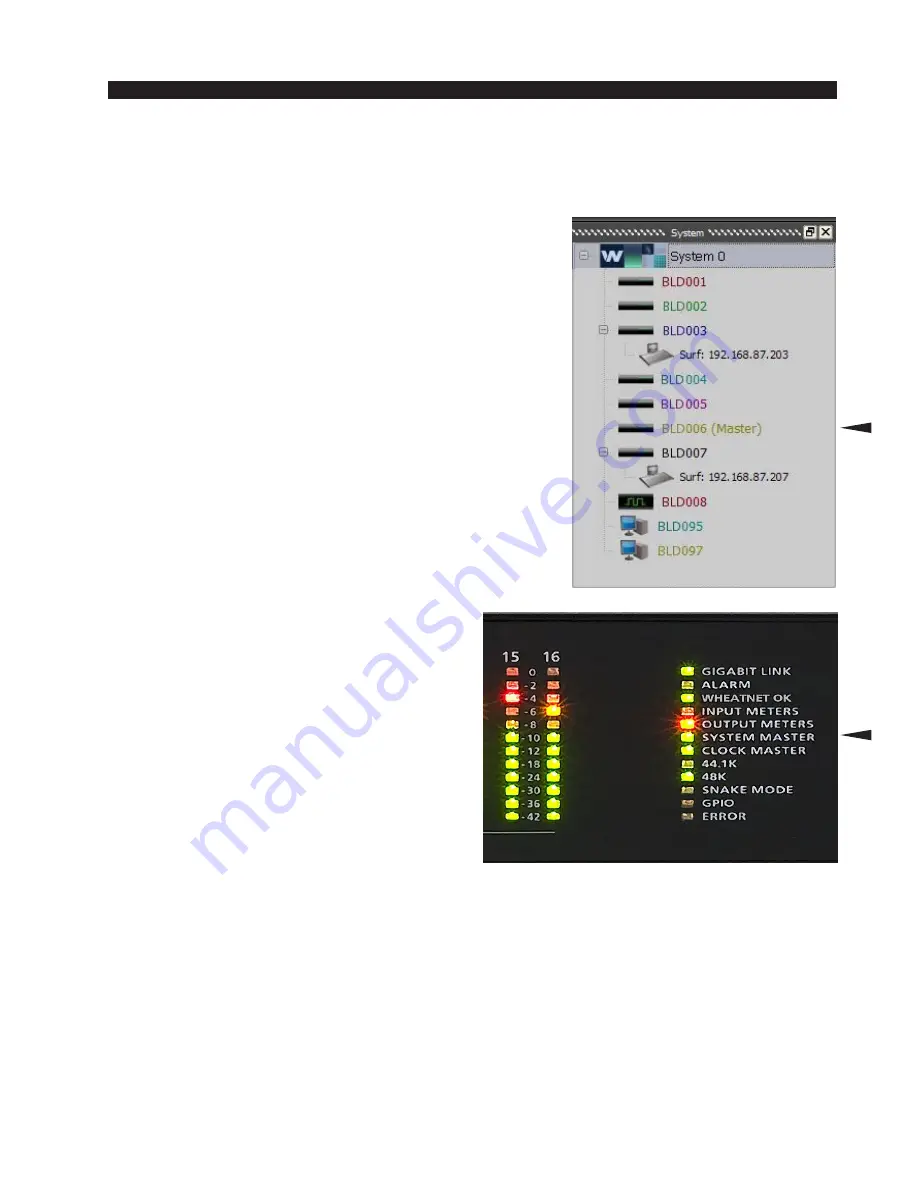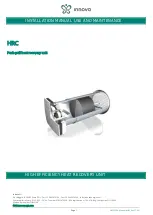
W H E A T N E T - I P
N A V I G A T O R G U I
page 4 – 13
WheatNet-IP
/ Apr 2009
An Important Point About WheatNet-IP Systems - The System Master
Because the WheatNet-IP system is dynamic, there needs to be some mechanism
to arbitrate and maintain the specifics of the system con-
figuration from moment to moment. “Somebody has to be
in charge!” In the WheatNet-IP system, we don’t rely on a
PC for this role; the entire system is fully functional
without any PCs. Since all BLADEs are electrically iden-
tical (except for their specific audio I/O ports) the system
has been architected with a distributed intelligence. Each
and every BLADE has enough on-board intelligence to
control the whole system by itself. During initial set up,
one of the BLADEs in the system is automatically selected
to be System Master. It is this System Master BLADE that
gathers all of the information from the BLADEs, control
surfaces, and PCs that belong to the system. The Master
BLADE then redistributes all of this information back to
every BLADE. The Master BLADE and all of the others
keep this information in flash memory so it is not lost when
the power is turned off. What this means is that every
BLADE is fully capable of running the entire system at any
moment. In fact, if the Master BLADE is lost for any
reason, a new BLADE will be elected as Master and
seamlessly take up running the system. The
beauty of this architecture is the depth of backup
and redundancy automatically provided. Es-
sentially there are as many backup hosts in the
system as you have BLADEs; you can never
lose your system because a host controller went
down. The need for archiving is also greatly
reduced, because there is a system copy resid-
ing in every BLADE. It’s like having a RAID
array of hosts. If you look carefully at the list of
BLADEs in the System Pane, you will see one
of them designated as the current System Mas-
ter. There is also a front panel LED indicator
that lights to show that the BLADE is function-
ing as the System Master.
Similarly, the system will also have a Clock Master, responsible for synchronizing
timing throughout the system. If a Clock Master has been designated via the System
Info tab (see later in this chapter) by assigning a Primary External Reference, then that
BLADE will be indicated in the System Pane by the “BLADE wave” icon - see
BLD008 in the example shown. If, however, no such assignment is made, the system
will self-designate a Clock Master and flag it as such in the System Pane. Once again,
a front panel LED lights on the designated BLADE.
Note that in a single BLADE system the one BLADE will serve as both the System
Master and the Clock Master.
















































